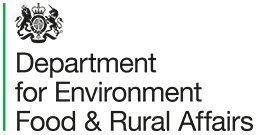Atomic absorption spectroscopy lamps: exemption for lead and cadmium
Overview
The Restriction of the Use of Certain Hazardous Substances in Electrical and Electronic Equipment Regulations 2012 (the RoHS regulations) restricts the use of 10 hazardous substances in electrical and electronic equipment (EEE), with a view to contributing to the protection of human health and the environment, including the sound recovery and disposal of waste.
Industry can apply for exemptions to allow the supply of products using one or more of the restricted substances above the threshold limits set down in the RoHS regulations where specified criteria are met. Applications for exemptions are made to the Secretary of State under regulation 6 of the Hazardous Substances and Packaging (Legislative Functions and Amendment) (EU Exit) Regulations 2020 (the 2020 regulations). Any exemption that is granted can be used across industry, not just by the business that applied for the exemption. Exemptions are granted where it is determined that the necessary criteria have been met following a detailed evaluation conducted in accordance with regulation 5 of the 2020 regulations.
Following the UK’s withdrawal from the EU, the function of granting, renewing and revoking exemptions were, in relation to Great Britain, transferred to the Secretary of State by the 2020 regulations, using powers in section 8 of the European Union (Withdrawal) Act 2018 (the Withdrawal Act).
Part of the evaluation process is an 8-week consultation to collect contributions from stakeholders.
A request for renewal for an exemption was submitted for the use of lead and cadmium in atomic absorption spectroscopy lamps used in industrial monitoring and control instruments. These lamps are used in line source atomic absorption spectroscopy (LS-AAS) which is a widely used analytical method for precise measurement of the amount of specific elements present in a sample. The instruments rely on the presence of a reference sample of the element being measured, therefore in order to measure lead, cadmium or mercury then these elements must be included within the lamp. Example uses of these instruments include testing for contaminants and pollutants in mining and metal processing industry; for quality control in the pharmaceutical industry; testing contaminants in food manufacturing processes; using for industrial purposes, and; for clinical testing.
The requested duration of the exemption is for 7 years and according to the application it would be expected to lead to the introduction of 189g of cadmium, 627g of lead and 0.1g of mercury to the GB market annually. The applicant states that elimination or substitution of cadmium, lead or mercury whilst maintaining the current technical performance is scientifically or technically impracticable.
The exemption covers monitoring and control instruments in industry under category 9 (industrial) of electrical and electronic equipment (EEE), as covered in the 2012 RoHS regulations.
The applicant proposed the following change in the wording of the current exemption entry: Lead, cadmium, and mercury in atomic absorption spectroscopy lamps.
The original wording is: Lead and cadmium in atomic absorption spectroscopy lamps.
Audiences
- Environmental professional services
- Manufacturing Industry
- Retail Industry
Interests
- Chemicals and pesticides
- Consultations
- Waste and recycling

Share
Share on Twitter Share on Facebook